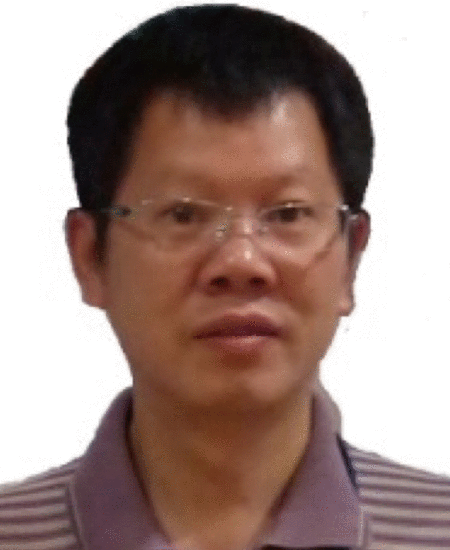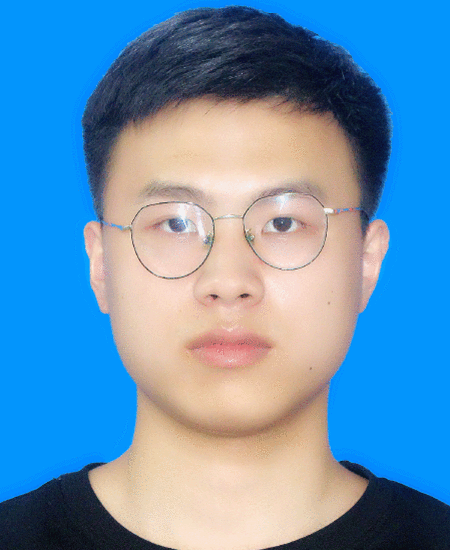Abstract:
Target localization is one of the most important research topics in the field of radar signal processing. In this article, the problem of multitarget enumeration and loca...Show MoreMetadata
Abstract:
Target localization is one of the most important research topics in the field of radar signal processing. In this article, the problem of multitarget enumeration and localization in the distributed multiple-input multiple-output radar with noncoherent processing mode is investigated. We first analyze the theoretical bound of the multitarget localization accuracy under the discrete time signal model and the Swerling 1 target model. It is determined by the Cram\acute{\text{e}}r–Rao lower bound at a low signal-to-noise ratio (SNR) and the sampling lower bound when the SNR is high. Furthermore, an innovative multitarget enumeration and localization scheme is developed, which is based on the energy modeling of the multiple transmitter–receiver paths and the compressive sensing theory. To solve the sparse vector recovery issue, we design a lightweight iterative greedy pursuit algorithm including the similarity evaluation strategy. In addition, an iterative-based target position refinement process is designed to alleviate the off-grid problem caused by the spatial discretization. The proposal utilizes the samples of the raw signals and belongs to the category of the direct localization. Nevertheless, it has significantly higher computational efficiency and lower data communication burden than the conventional direct localization methods, while avoiding the complex data association encountered by the indirect localization methods. Finally, the simulation results validate the effectiveness and robustness of the proposed method.
Published in: IEEE Transactions on Aerospace and Electronic Systems ( Volume: 59, Issue: 4, August 2023)
Funding Agency:

National Key Laboratory of Science and Technology on ATR, College of Electronic Science, National University of Defense Technology, Changsha, China
Lingxiao Zhu received the B.S. degree in remote sensing science and technology, in 2016, from the China University of Geosciences, Wuhan, China, and the M.S. degree in information and communication engineering, in 2018, from the National University of Defense Technology, Changsha, China, where he is currently working toward the Ph.D. degree in information and communication engineering with the National Key Laboratory of S...Show More
Lingxiao Zhu received the B.S. degree in remote sensing science and technology, in 2016, from the China University of Geosciences, Wuhan, China, and the M.S. degree in information and communication engineering, in 2018, from the National University of Defense Technology, Changsha, China, where he is currently working toward the Ph.D. degree in information and communication engineering with the National Key Laboratory of S...View more

National Key Laboratory of Science and Technology on ATR, College of Electronic Science, National University of Defense Technology, Changsha, China
Gongjian Wen (Member, IEEE) received the B.S. degree in signal and information processing and the M.S. and Ph.D. degrees in information and communication engineering from the National University of Defense Technology, Changsha, China, in 1994, 1997, and 2000, respectively.
Since 2009, he has been a Professor with the National Key Laboratory of Science and Technology on ATR, College of Electronic Science, National Universit...Show More
Gongjian Wen (Member, IEEE) received the B.S. degree in signal and information processing and the M.S. and Ph.D. degrees in information and communication engineering from the National University of Defense Technology, Changsha, China, in 1994, 1997, and 2000, respectively.
Since 2009, he has been a Professor with the National Key Laboratory of Science and Technology on ATR, College of Electronic Science, National Universit...View more

National Key Laboratory of Science and Technology on ATR, College of Electronic Science, National University of Defense Technology, Changsha, China
Yuanyuan Liang received the B.Sc. degree in detection, guidance and control technology from Beihang University, Beijing, China, in 2016, and the M.Sc. degree in electronic science and technology from the China Academy of Space Technology, Lanzhou, China, in 2019. He is currently working toward the Ph.D. degree in information and communication engineering with the National University of Defense Technology, Changsha, China.
...Show More
Yuanyuan Liang received the B.Sc. degree in detection, guidance and control technology from Beihang University, Beijing, China, in 2016, and the M.Sc. degree in electronic science and technology from the China Academy of Space Technology, Lanzhou, China, in 2019. He is currently working toward the Ph.D. degree in information and communication engineering with the National University of Defense Technology, Changsha, China.
...View more

National Key Laboratory of Science and Technology on ATR, College of Electronic Science, National University of Defense Technology, Changsha, China
Dengsanlang Luo received the M.S. degree in computer software and theory from Shenyang Ligong University, Shenyang, China, in 2019. He is currently working toward the Ph.D. degree in information and communication engineering with the National University of Defense Technology, Changsha, China.
His current research interests include multiple-input and multiple-output radar and signal processing.
Dengsanlang Luo received the M.S. degree in computer software and theory from Shenyang Ligong University, Shenyang, China, in 2019. He is currently working toward the Ph.D. degree in information and communication engineering with the National University of Defense Technology, Changsha, China.
His current research interests include multiple-input and multiple-output radar and signal processing.View more

National Key Laboratory of Science and Technology on ATR, College of Electronic Science, National University of Defense Technology, Changsha, China
Haojun Jian (Student Member, IEEE) received the B.S. degree in surveying and mapping engineering from Wuhan University, Wuhan, China, in 2022. He is currently working toward the M.S. degree in information and communication engineering with the National University of Defense Technology, Changsha, China.
His research interests include signal processing, computer vision and UAV photogrammetry.
Mr. Jian is a Student Member of t...Show More
Haojun Jian (Student Member, IEEE) received the B.S. degree in surveying and mapping engineering from Wuhan University, Wuhan, China, in 2022. He is currently working toward the M.S. degree in information and communication engineering with the National University of Defense Technology, Changsha, China.
His research interests include signal processing, computer vision and UAV photogrammetry.
Mr. Jian is a Student Member of t...View more

National Key Laboratory of Science and Technology on ATR, College of Electronic Science, National University of Defense Technology, Changsha, China
Lingxiao Zhu received the B.S. degree in remote sensing science and technology, in 2016, from the China University of Geosciences, Wuhan, China, and the M.S. degree in information and communication engineering, in 2018, from the National University of Defense Technology, Changsha, China, where he is currently working toward the Ph.D. degree in information and communication engineering with the National Key Laboratory of Science and Technology on ATR, College of Electronic Science.
His research interests include radar signal processing and multiple-input and multiple-output systems.
Lingxiao Zhu received the B.S. degree in remote sensing science and technology, in 2016, from the China University of Geosciences, Wuhan, China, and the M.S. degree in information and communication engineering, in 2018, from the National University of Defense Technology, Changsha, China, where he is currently working toward the Ph.D. degree in information and communication engineering with the National Key Laboratory of Science and Technology on ATR, College of Electronic Science.
His research interests include radar signal processing and multiple-input and multiple-output systems.View more

National Key Laboratory of Science and Technology on ATR, College of Electronic Science, National University of Defense Technology, Changsha, China
Gongjian Wen (Member, IEEE) received the B.S. degree in signal and information processing and the M.S. and Ph.D. degrees in information and communication engineering from the National University of Defense Technology, Changsha, China, in 1994, 1997, and 2000, respectively.
Since 2009, he has been a Professor with the National Key Laboratory of Science and Technology on ATR, College of Electronic Science, National University of Defense Technology. His research interests include statistical signal processing, estimation and detection theory, remote sensing, and synthetic aperture radar.
Gongjian Wen (Member, IEEE) received the B.S. degree in signal and information processing and the M.S. and Ph.D. degrees in information and communication engineering from the National University of Defense Technology, Changsha, China, in 1994, 1997, and 2000, respectively.
Since 2009, he has been a Professor with the National Key Laboratory of Science and Technology on ATR, College of Electronic Science, National University of Defense Technology. His research interests include statistical signal processing, estimation and detection theory, remote sensing, and synthetic aperture radar.View more

National Key Laboratory of Science and Technology on ATR, College of Electronic Science, National University of Defense Technology, Changsha, China
Yuanyuan Liang received the B.Sc. degree in detection, guidance and control technology from Beihang University, Beijing, China, in 2016, and the M.Sc. degree in electronic science and technology from the China Academy of Space Technology, Lanzhou, China, in 2019. He is currently working toward the Ph.D. degree in information and communication engineering with the National University of Defense Technology, Changsha, China.
His interests include multiple-input and multiple-output radar system, signal processing, and localization.
Yuanyuan Liang received the B.Sc. degree in detection, guidance and control technology from Beihang University, Beijing, China, in 2016, and the M.Sc. degree in electronic science and technology from the China Academy of Space Technology, Lanzhou, China, in 2019. He is currently working toward the Ph.D. degree in information and communication engineering with the National University of Defense Technology, Changsha, China.
His interests include multiple-input and multiple-output radar system, signal processing, and localization.View more

National Key Laboratory of Science and Technology on ATR, College of Electronic Science, National University of Defense Technology, Changsha, China
Dengsanlang Luo received the M.S. degree in computer software and theory from Shenyang Ligong University, Shenyang, China, in 2019. He is currently working toward the Ph.D. degree in information and communication engineering with the National University of Defense Technology, Changsha, China.
His current research interests include multiple-input and multiple-output radar and signal processing.
Dengsanlang Luo received the M.S. degree in computer software and theory from Shenyang Ligong University, Shenyang, China, in 2019. He is currently working toward the Ph.D. degree in information and communication engineering with the National University of Defense Technology, Changsha, China.
His current research interests include multiple-input and multiple-output radar and signal processing.View more

National Key Laboratory of Science and Technology on ATR, College of Electronic Science, National University of Defense Technology, Changsha, China
Haojun Jian (Student Member, IEEE) received the B.S. degree in surveying and mapping engineering from Wuhan University, Wuhan, China, in 2022. He is currently working toward the M.S. degree in information and communication engineering with the National University of Defense Technology, Changsha, China.
His research interests include signal processing, computer vision and UAV photogrammetry.
Mr. Jian is a Student Member of the China Society of Image and Graphics.
Haojun Jian (Student Member, IEEE) received the B.S. degree in surveying and mapping engineering from Wuhan University, Wuhan, China, in 2022. He is currently working toward the M.S. degree in information and communication engineering with the National University of Defense Technology, Changsha, China.
His research interests include signal processing, computer vision and UAV photogrammetry.
Mr. Jian is a Student Member of the China Society of Image and Graphics.View more


